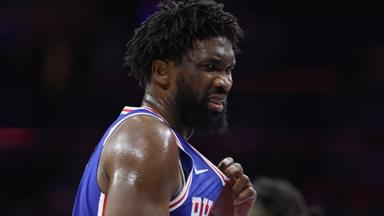There’s no denying that the money involved with the game has exploded in the NBA. Franchise valuations have taken off to where even the least valuable franchise is worth a few billion. The league is raking in about $75 billion just from media rights, while the superstars are signing contracts for well over $200 million. Well, the college basketball landscape has also shifted dramatically.
Advertisement
With the advent of name, image and likeness (NIL), players can now make money long before turning pro. While this is great from a labor fairness perspective, it’s also had some unintended consequences.
NBA vet Matt Barnes spoke on the Big Boy’s Hangout about how NIL has changed the game, for better and for worse. “NIL is like the Wild Wild West right now,” he said.
“‘Cause we always fought for money. I’m talking on a college level; it’s starting as early as high school now. But on a college level, we know these colleges are making millions upon millions and billions of dollars, mostly off black players’ backs,” elaborated Barnes.
“I remember Chris Webber talking about the Fab Five, like, ‘They’re selling my jerseys in stores, I don’t even have money to get a sandwich.’ So there’s just certain situations where we fought for, we finally have it, but there’s no regulation on it now, so it’s wild,” he added.
NIL money has resulted in an explosion in the number of players who transfer schools, some even multiple times during their college careers. It’s no longer normal for a player to ride the bench as an underclassman and wait for his opportunity as a junior or senior.
Everyone wants instant success and limelight now. And if a school comes calling with an enticing offer, most players pack up and leave. “We talked before the show about loyalty and going somewhere and toughing it out, and it kind of builds character,” Barnes said.
“I was someone that went to UCLA, back-to-back No. 1 recruiting classes in the country, and I had a reality check when I got there, and I had to bide my time the first year, year-and-a-half, I had to get better. I couldn’t pout, I didn’t transfer, I didn’t [ask] ‘Why me?’ I had to get better, and it made me get better, and it built character,” he added.
That kind of patience helped Barnes eventually carve out a role in the pros, where he enjoyed a 14-year career. It’s a lesson he’s passing on to his two sons, both of whom are talented high school players right now. All the more, because he sees so many young players these days making bad choices.
“Now the league is so young and it’s drafted on potential,” said Barnes. “So now it’s just such a younger league now that they want kids that are young, but for every two or three kids that become superstars, there are 200 kids that don’t, that could have gone to college for another year or two and then went to the league.”
Barnes sees a correlation between players whose dads played in the NBA and long-term success, since they have a roadmap to follow. Steph and Seth Curry, Klay Thompson, Jalen Brunson, Domantas Sabonis, Tim Hardaway Jr., Gary Payton II, and Scottie Pippen Jr. are some of the examples.
“I feel like there are so many dads that are involved in this game now that have kids, which is great,” Barnes continued. “Because to be able to walk your kid down this process and show them, I feel bad for all those parents that just kind of had to figure it out on their own.”
Barnes said having someone to guide who has been there before is like having a “cheat code.” And he presented some stats to back it up.
“There are so many different pitfalls you can fall into if you’re trying to navigate it by yourself. Being too young, you have got to think, every single year there’s probably 200 kids, 250 kids in the draft, and there’s only 60 draft spots,” said Barnes.
NIL is helping a lot of these young players in the short term. But if they don’t make smart decisions with their careers, it could hinder their ability to stick in the NBA.





